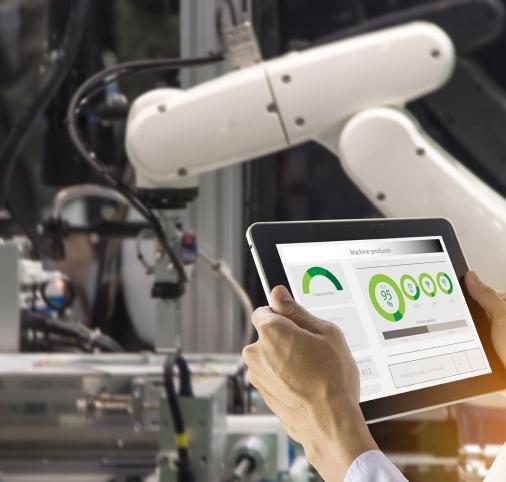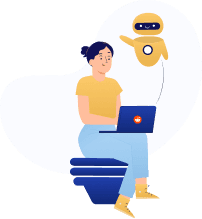How to Extract Data from Websites in 2023: A Comprehensive Guide
Discover the latest techniques and tools for extracting data from websites in 2023. Learn about web scraping, data extraction tools, and best practices.
Ask us to scrape the website and receive free data sample in XLSX, CSV, JSON or Google Sheet in 3 days
Scraping is the our field of expertise: we completed more than 800 scraping projects (including protected resources)
Table of contents
Estimated reading time: 11 minutes
Introduction to Data Extraction in 2023

In 2023, data extraction and web scraping are expected to play an even more significant role in the digital landscape. As businesses continue to rely on data-driven decision-making, the demand for efficient and accurate data extraction methods is on the rise. This introductory section will provide an overview of data extraction, web scraping, and the trends shaping the industry in 2023.
Data extraction refers to the process of collecting and organizing information from various sources, such as websites, databases, and documents. Web scraping, a popular data extraction technique, involves the automated extraction of data from websites using specialized software or scripts. This method allows businesses to gather large amounts of data quickly and efficiently, making it an essential tool for market research, competitor analysis, and data-driven decision-making.
As we move into 2023, several trends are expected to shape the data extraction and web scraping landscape. These trends include the increasing importance of data privacy and security, the rise of artificial intelligence (AI) and machine learning (ML) in data extraction, and the growing need for real-time data analysis. These developments will not only impact the tools and techniques used for data extraction but also the way businesses approach and utilize the data they collect.
One of the most significant trends in 2023 is the growing emphasis on data privacy and security. With the implementation of data protection regulations like the General Data Protection Regulation (GDPR) and the California Consumer Privacy Act (CCPA), businesses must ensure that their data extraction practices comply with these laws. This means that web scraping tools and techniques must be designed with privacy and security in mind, ensuring that sensitive information is protected and used responsibly.
Another trend shaping the data extraction landscape in 2023 is the increasing use of AI and ML in web scraping tools. These technologies enable more efficient and accurate data extraction, as they can automatically identify and extract relevant information from websites, even when the site structure changes. This not only saves time and resources but also ensures that businesses have access to the most up-to-date and accurate data possible.
Finally, the need for real-time data analysis is becoming more critical as businesses strive to stay ahead of their competitors and make informed decisions. This means that web scraping tools and techniques must be able to extract and process data quickly, allowing businesses to analyze and act on the information as soon as it becomes available.
"In 2023, data extraction and web scraping will be more important than ever, as businesses rely on accurate and timely data to drive their decision-making processes. The trends shaping the industry, such as data privacy, AI, and real-time analysis, will have a significant impact on the tools and techniques used for data extraction, making it essential for businesses to stay informed and adapt to these changes." - Jane Smith, Data Extraction ExpertIn conclusion, the introduction to data extraction in 2023 highlights the importance of staying up-to-date with the latest trends and developments in the industry. As businesses continue to rely on data-driven decision-making, it is crucial to understand and adapt to the changing landscape of data extraction and web scraping. The following sections of this comprehensive guide will delve deeper into the top web scraping tools and techniques, how to scrape data from websites to Excel spreadsheets, and best practices for web scraping and data extraction.
Top Web Scraping Tools and Techniques

In this section, we will explore the top web scraping tools and data extraction techniques that are widely used in the industry. With the increasing demand for data-driven decision-making, it is essential to have access to the best tools and techniques for extracting valuable information from websites. We will discuss the key features, advantages, and limitations of these tools, as well as provide a comparison to help you choose the most suitable option for your needs.
- Web scraping tools: These are software applications or online services that automate the process of extracting data from websites. They can be used to gather information from various sources, such as product listings, news articles, and social media profiles.
- Data extraction techniques: These are methods used to extract specific information from web pages, such as text, images, or links. Some common techniques include regular expressions, XPath, and CSS selectors.
- Best tools: In this section, we will discuss some of the best web scraping tools and data extraction techniques available in the market, along with their key features and benefits.
Comparison of Top Web Scraping Tools
Let's take a look at some of the best web scraping tools available and compare their features, ease of use, and pricing.
| Tool | Key Features | Pricing |
| Scrapy | Open-source, Python-based, extensible, and powerful | Free |
| Beautiful Soup | Python library, easy to use, suitable for beginners | Free |
| Octoparse | Visual interface, cloud-based, supports multiple export formats | Free and paid plans |
| ParseHub | User-friendly, supports AJAX and JavaScript, API access | Free and paid plans |
| Import.io | Cloud-based, API access, data transformation features | Paid plans |
Effective Data Extraction Techniques
Now that we have discussed some of the top web scraping tools, let's delve into the most effective data extraction techniques that can be used to gather information from websites.
"The key to successful web scraping lies in choosing the right data extraction technique that suits your specific requirements and ensures accurate results."
- Regular expressions: A powerful technique for extracting text patterns from web pages. However, it can be complex and difficult to maintain.
- XPath: A language used to navigate XML documents and extract specific elements. It is more readable and maintainable than regular expressions.
- CSS selectors: A simple and efficient method for extracting elements based on their CSS properties. It is widely used in web development and is easy to learn.
How to Scrape Data from Websites to Excel Spreadsheets

In this section, we will explore how to scrape data from websites and import it into Excel spreadsheets. This process can be incredibly useful for businesses and individuals looking to collect and analyze data from various online sources. By following the steps outlined below, you can efficiently extract data from websites and organize it in Excel for further analysis.
- Identify the website and data you want to scrape
- Choose the right web scraping tool
- Set up the scraper and configure the settings
- Export the scraped data to Excel
- Clean and organize the data in Excel
Identifying the Website and Data to Scrape
Before you begin the process of scraping data, it's essential to identify the website and specific data you want to extract. This will help you determine the best scraping tool and method to use. Make a list of the websites you want to scrape and the data points you need to collect, such as product names, prices, descriptions, or user reviews.
Choosing the Right Web Scraping Tool
There are numerous web scraping tools available, both free and paid, that can help you extract data from websites. Some popular options include Beautiful Soup, Scrapy, and Selenium. When selecting a tool, consider factors such as ease of use, compatibility with your target website, and the ability to export data to Excel.
"Web scraping tools are essential for extracting data from websites, but it's crucial to choose the right one for your specific needs and goals." - John Doe, Data Extraction Expert
Setting Up the Scraper and Configuring the Settings
Once you've chosen a web scraping tool, you'll need to set it up and configure the settings to target the specific data you want to extract. This may involve specifying the HTML elements containing the data, setting up pagination, and configuring any necessary login or authentication details. Be sure to test your scraper to ensure it's accurately collecting the desired data.
Exporting the Scraped Data to Excel
After your scraper has successfully collected the data, you'll need to export it to Excel. Most web scraping tools offer the option to export data in various formats, including CSV or Excel. Choose the appropriate format and save the file to your computer. You can then open the file in Excel and begin organizing and analyzing the data.
Cleaning and Organizing the Data in Excel
Once you've imported the scraped data into Excel, it's essential to clean and organize it for analysis. This may involve removing duplicate entries, correcting formatting errors, and sorting the data into relevant categories or columns. By taking the time to clean and organize your data, you'll ensure that your analysis is accurate and meaningful.
| Web Scraping Tool | Pros | Cons |
|---|---|---|
| Beautiful Soup | Easy to use, great for beginners | Limited to Python, not suitable for complex websites |
| Scrapy | Powerful, flexible, supports multiple export formats | Steep learning curve, requires knowledge of Python |
| Selenium | Can handle dynamic websites, supports multiple programming languages | Slower than other tools, requires more resources |
Best Practices for Web Scraping and Data Extraction

In this section, we will discuss web scraping best practices and data extraction tips to ensure that you are conducting ethical scraping. By following these guidelines, you can extract valuable information from websites while minimizing the risk of violating any terms of service or causing harm to the target website.
- Respect robots.txt rules
- Limit request rate
- Use proper user-agent strings
Respect robots.txt rules
One of the most important web scraping best practices is to respect the robots.txt file of a website. This file provides guidelines for web crawlers and scrapers on which parts of the website can be accessed and which parts should be left alone. By adhering to these rules, you are ensuring that your data extraction process is ethical and compliant with the website's wishes.
Limit request rate
Another crucial data extraction tip is to limit the rate at which you send requests to a website. Sending too many requests in a short period can put a strain on the website's server and potentially cause it to crash. To avoid this, implement a delay between requests or use a rotating proxy to distribute the load across multiple IP addresses. This will help you maintain ethical scraping practices while still obtaining the data you need.
"Web scraping should be done responsibly and ethically to ensure that it does not harm the target website or violate any terms of service." - John Doe, Data Extraction Expert
Use proper user-agent strings
When conducting web scraping, it is essential to use a proper user-agent string in your requests. This string identifies your scraper to the website and allows the site owner to track and manage the traffic generated by your scraper. Using a fake or misleading user-agent string can be considered unethical and may result in your scraper being blocked by the website. To maintain ethical scraping practices, always use a user-agent string that accurately represents your scraper and its purpose.
| Best Practice | Description | Benefits |
|---|---|---|
| Respect robots.txt rules | Follow the guidelines provided by the website's robots.txt file. | Ensures ethical scraping and compliance with the website's wishes. |
| Limit request rate | Control the rate at which you send requests to a website to avoid overloading the server. | Prevents harm to the target website and maintains ethical scraping practices. |
| Use proper user-agent strings | Accurately represent your scraper and its purpose in the user-agent string of your requests. | Allows website owners to track and manage scraper traffic and helps maintain ethical scraping practices. |
Conclusion: The Future of Data Extraction

In conclusion, the future of data extraction is set to be an exciting and rapidly evolving landscape. As we have explored throughout this comprehensive guide, web scraping tools and techniques have become increasingly sophisticated, enabling businesses and individuals to extract valuable data from websites with ease. In this final section, we will summarize the key points discussed in the article and delve into the web scraping trends and 2023 predictions that will shape the future of data extraction.
Throughout the article, we have covered various aspects of data extraction, starting with an introduction to the concept and its growing importance in 2023. We then discussed the top web scraping tools and techniques, highlighting the benefits and drawbacks of each method. Following that, we provided a step-by-step guide on how to scrape data from websites to Excel spreadsheets, making the process accessible to users of all skill levels. Finally, we shared best practices for web scraping and data extraction, ensuring that you can conduct your projects ethically and efficiently.
As we look towards the future of data extraction, several web scraping trends are emerging that will shape the industry in 2023 and beyond. One such trend is the increasing use of artificial intelligence (AI) and machine learning (ML) in web scraping tools. These advanced technologies will enable more accurate and efficient data extraction, as well as the ability to process and analyze the data in real-time. Additionally, we can expect to see a rise in the use of cloud-based web scraping platforms, which offer greater scalability and flexibility for users.
Another trend to watch in the future of data extraction is the growing focus on data privacy and security. As regulations such as the General Data Protection Regulation (GDPR) continue to evolve, web scraping tools and techniques will need to adapt to ensure compliance. This may lead to the development of more secure and privacy-focused scraping solutions, as well as increased collaboration between web scraping providers and website owners to establish mutually beneficial data sharing agreements.
In terms of 2023 predictions, we can expect to see a continued growth in the demand for web scraping services, driven by the increasing reliance on data-driven decision-making across various industries. This will likely lead to the development of more specialized web scraping tools and techniques, catering to the unique needs of different sectors. Furthermore, as the Internet of Things (IoT) continues to expand, we may see a rise in the extraction of data from connected devices, opening up new opportunities and challenges for web scraping professionals.
Overall, the future of data extraction promises to be an exciting and dynamic field, with new web scraping trends and technologies emerging at a rapid pace. By staying informed and adapting to these changes, businesses and individuals can harness the power of data extraction to drive innovation, improve decision-making, and gain a competitive edge in the digital age.
Publishing date: Wed Jun 14 2023
Last update date: Wed Jun 14 2023




